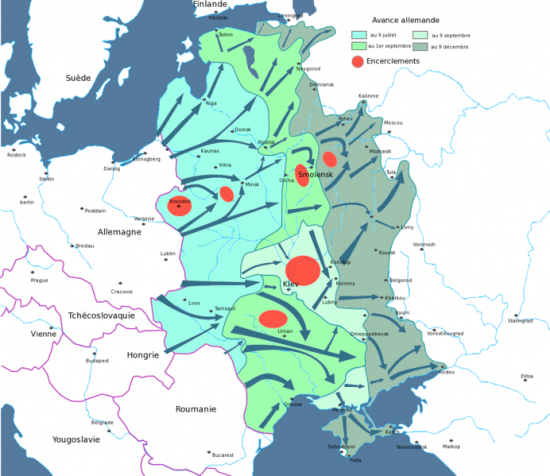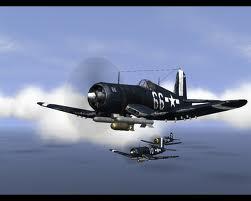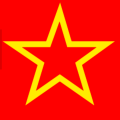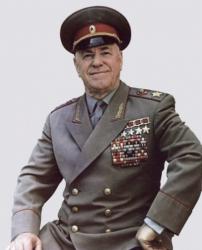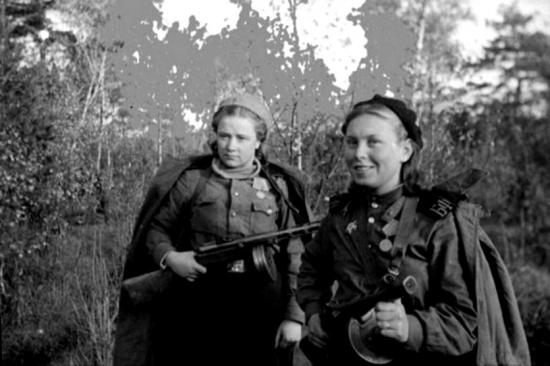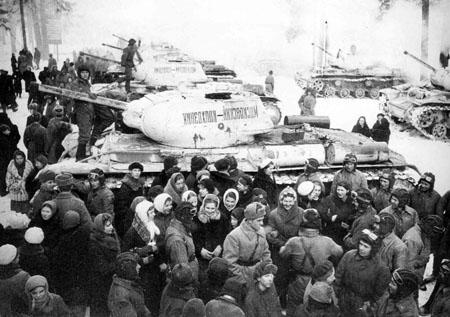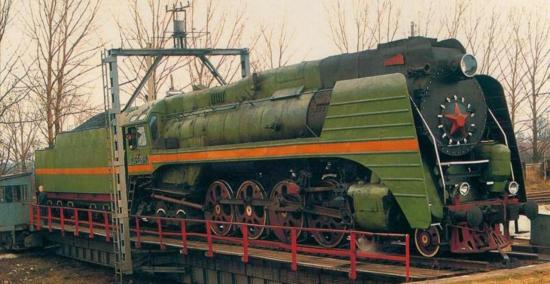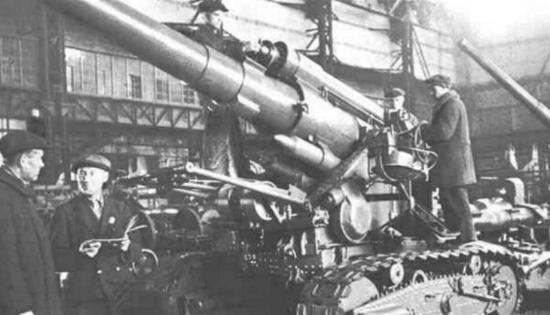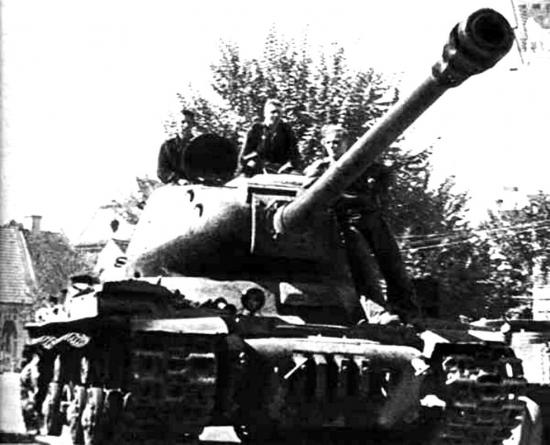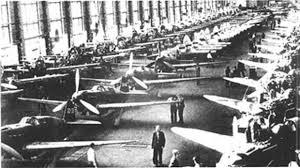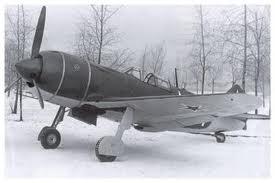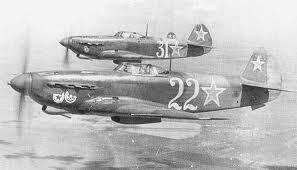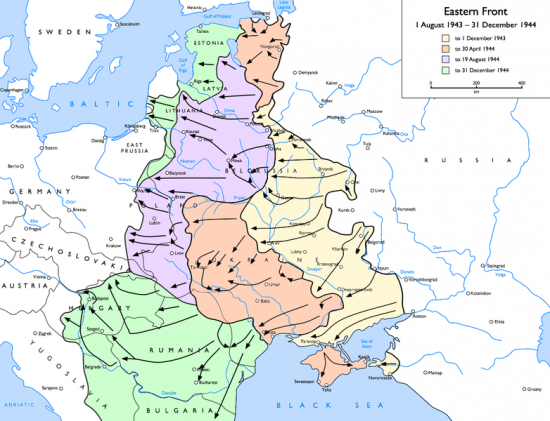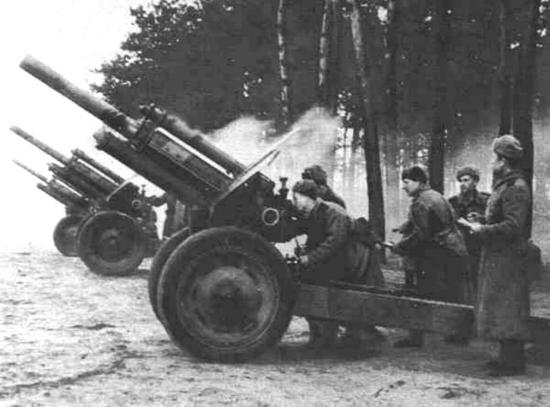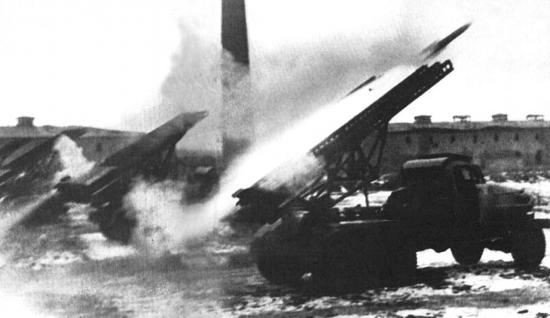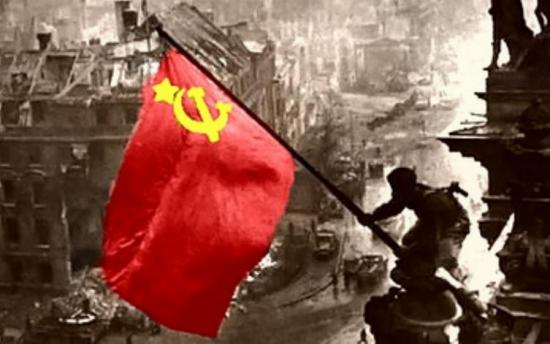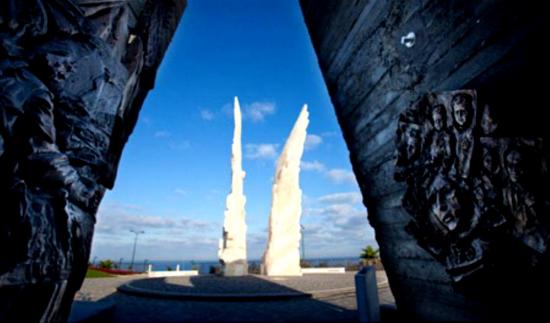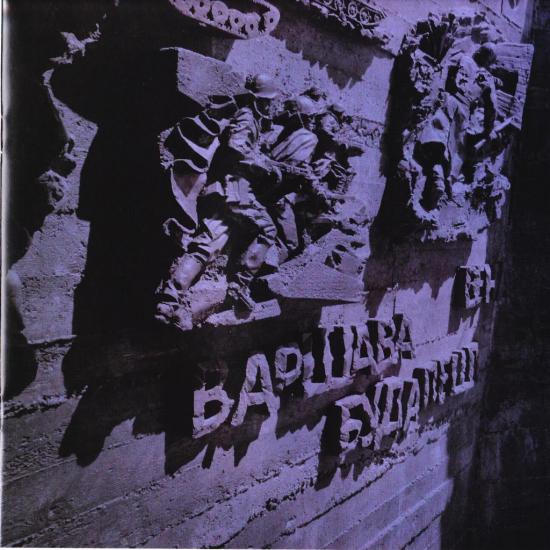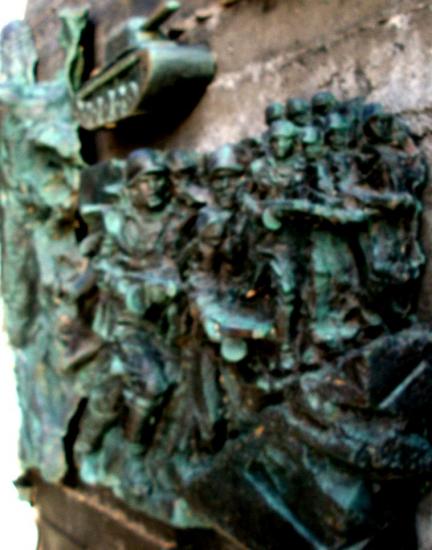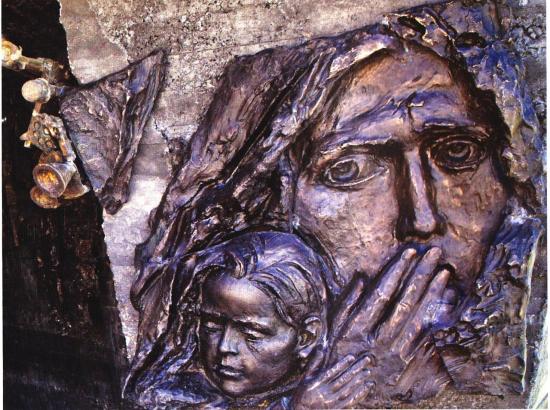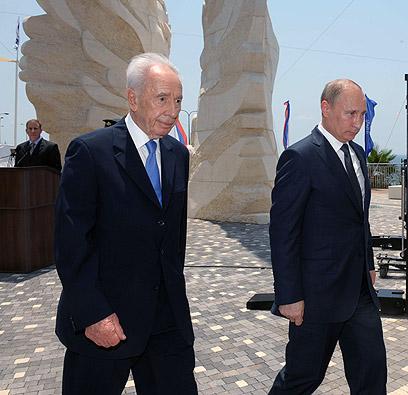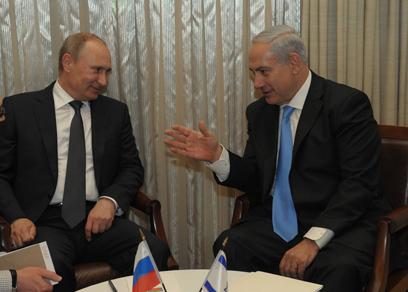WWII-The true History2/2
Proposal of reform of education regarding the history of WWII in France and in the rest of the European Union
12 June 2013
This text will be updated soon
Didier Bertin
PART 2/2
IV-INCREASED COUNTRIE UNDER GERMAN CONTROL AFTER THE BEGINNING OF THE WAR
AGAINST THE USSR
UNTERNEHMEN BARBAROSSA - 22 JUNE 1941
Offensive against the USSR
From June to December 1941, Germany invaded the Polish territory controlled by the USSR and the three Baltic countries: Lithuania, Latvia and Estonia, where many people and militias were generally favorable to the Germans. German troops invaded Belarus and Ukraine, and arrived near Moscow; they occupied a large band of the Russian territory from the Baltic Sea to the Black Sea on December 9th, 1941.
V-THE BREAK OF THE USA WITH ISOLATIONISM NOTABLY AS AN INDIRECT
CONSEQUENCE OF THE BRILLIANT VICTORY OF THE RED ARMY AGAINST JAPAN
The intervention of Japan in Manchuria in the early 1930s caused a rise in tension between the Soviet Union and Japan. The Soviet Union and Mongolia decided then to cooperate by signing a treaty of friendship of ten years, on12 March 1936.
After several border incidents, tension eventually resulted in August and September 1939, in an open battle in Kalkhin-Gol, where Soviet forces commanded by General Georgy Zhukov inflicted a heavy defeat on the Japanese forces.
During this battle, the Soviets used for the first time a large number of tanks in coordination with artillery meanwhile aviation supported the troops on the ground.
Ilyushin Il (Sturmovik)
After this defeat the Japan waived its goals of conquest of Northern Asia and concentrated its efforts on the South-East territories for their oil resources and raw materials and also on the Pacific.
U.S. disputed the Japanese presence in China (which benefited later from Lend-Lease Plan) and organized with the Netherlands an embargo on oil and steel to Japan in order to curb its targeted conquests in Southeast Asia. The U.S. Pacific Fleet became in turn a military target for Japan.
Japan led the attack on Pearl Harbor on December 7, 1941 which caused the declaration of War of the USA on Japan. As a result of agreements process Italy and Germany declared war on USA and then USA was at last obliged to participate in the world conflict.
The United States entered then the war "very late" and well after the invasion of Poland in 1939 and six months after the outbreak of the war against the USSR while the continental Europe was entirely under the control of AXIS troops to the suburbs of Moscow.
LEND-LEASE ACT
The Lend-Lease Act, signed on March 11, 1941, authorized the President of the United States to "sell, transfer, exchange, lease, or give by any means" any defense to any government "that the President considers vital for the defense of the United States."
The UK received 63% of this aid and the USSR which was the main fighting force in Europe during WWII only 22.5%.
This role of supplier was the essential part of the US intervention in Europe until 6 June 1944; meanwhile the Red Army was practically the sole force to oppose the Axis on the soil of Europe.
However, it must be noted that the USA decided to help the USSR before the start of Operation Barbarossa and were therefore much more lucid than the European allies who isolated the USSR.
From 1941 to 1945, U.S. aid amounted to USD 50.1 billion, which could be equivalent of USD 647 billion today.
Deliveries to the USSR:
Deliveries were made on different routes: By Sea to the Kola Peninsula and through the Barents Sea with the Arctic convoys and on the ground by the Persian Corridor through Iran.
|
Aircraft |
14 795 |
|
Tanks |
7 056 |
|
Jeeps |
51 503 |
|
Trucks |
375 883 |
|
Motorcycles |
35 170 |
|
Tractors |
8 071 |
|
Artillery |
8 218 |
|
Machine guns |
131 633 |
|
Explosives |
345 735 tonnes |
|
Construction Equipment |
10 910 000 dollars |
|
Wagons |
11 155 |
|
Locomotives |
1 981 |
|
Cargo ships |
90 |
|
Escort fighters of submarines |
105 |
|
Motor torpedos boats |
197 |
|
Boat engines |
7 784 |
|
Food |
4 478 000 tonnes |
|
Machinery and equipment |
1 078 965 000 dollars |
|
Non-ferrous Metals |
802 000 tonnes |
|
Oil products |
2 670 000 tonnes |
|
Chemicals |
842 000 tonnes |
|
Cotton |
106 893 000 tonnes |
|
Leather |
49 860 tonnes |
|
Tires |
3 786 000 |
|
Pairs of boots |
15 417 001 |
However the Red Army fought essentially with the production of the industry of the USSR. The Soviet strategic industries including weaponry were moved to the Urals far away from the German troops.
VI - THE MILITARY INTERVENTIONS OF THE ANGLO-AMERICAN ALLIES IN EUROPE
The U.S. entered the war in December 8, 1941 after the Japanese attack on Pearl Harbor i.e. 2 years and 3 months after the declaration of war by France and the United Kingdom on Germany. When the Japanese "forced" the U.S. to enter the war, continental Europe was under the full control of the Axis forces to the suburbs of Moscow.
The attack on Pearl Harbor was thus a greater trigger for the USA than the disastrous state of Europe.
Contrary to what the Americans meant with the slogan "Europe first" they concentrated first their efforts against Japan.
Almost one year after they entered in War in Europe, the USA made its first operation near Europe i.e. the "operation Torch" on November 8, 1942 in order to take control of Algeria and Morocco.
On November 28, 1943 at the Tehran Conference, Roosevelt and Churchill decided the principle of landing in Normandy at the request of Stalin claiming from the other allies to start fighting in Europe instead of letting the USSR fighting alone against the Axis.
It was not until June 6, 1944 or 7 months after the Tehran conference and 3 years and 9 months after the start of the war that the Anglo-American allies made a first "significant" intervention in continental Europe with the Normandy landings.
The Americans who had predicted the end of the war in 1944, wanted apparently to be involved in Europe for the last 6 months of the conflict according with this estimate.
The Anglo-American intervention in Europe was not only very late but also slow and painful despite the Red Army destroyed already main part of the German army and progressed rapidly to Germany in this time.
The Italian campaign began June 10, 1943 but the allies were blocked in this country by the Germans almost until the general surrender of Germany.
a-The very slow and difficult campaign of Italy
This campaign was particularly "slow" it begins in 1943 and ends with virtually the surrender of Germany on 8 May 1945. This was essentially Anglo-American operation with the secondary contribution of expeditionary forces from different countries the most efficient being that from Poland.
The French Expeditionary troops had only 112,000 soldiers whose 67,000 Muslims not recognized as French citizens and victims of the colonialism; the French troops were equivalent in figure to those of Canada. The landings in Italy were made in three stages of 9 July 1943 to 22 January 1944 respectively in the frame of the following operations: Husky involving 160,000 soldiers, Avalanche 190,000 soldiers and Anzio 110,000 soldiers.
Mussolini was relieved of his duties during the extraordinary meeting of the Fascist Grand Council of July 24, 1943, put in jail and replaced by the Marshal Badoglio who announced the surrender of the Italian Army on September 8, 1943; the Germans decided then to halt the advance of the Allies.
The Germans resisted several months on the winter Line whose key was the Monte Cassino; on May 17, 1944 the Polish troops took its control and opened the road to Rome which was freed on June 4, 1944.
The Germans withdrew then on the Gothic Line and blocked again allies. On April 9, 1945 the Polish troops took control of Bologna and finally the allies crossed the "Po" River on April 25, 1945. The German finally surrendered on May 2, 1945 in Italy i.e. only six days before the general surrender of Germany.
The allies have taken nearly two years to take the control of Italy despite the Italian Army surrendered in 1943.
b-The painful Normandy landings
The Anglo-American allies thought that the war in Europe will end in the months following the landings in Normandy of June 1944. This operation was planned in November 1943 (at the Teheran conference) at the request of the USSR in order to open a new front and hasten the end of the war. We might think that this operation was also necessary for the Anglo-American allies to enable them to take control of their areas of influence as decided at the Tehran conference.
Operation "Overlord" whose goal was to take in 40 days Caen and Cherbourg harbor (Operation Neptune), Brittany and the Atlantic ports by moving up to a line Le Havre Le Mans-Tours, actually lasted 87 days.
Nearly 3 million Allied soldiers, 400,000 vehicles, 3,000,000 tons of equipment and supplies went through Normandy.
The PLUTO system (Pipe-Line under the Ocean) was not sufficiently effective, the port of Cherbourg, which should have been the first deepwater port of the Allies, was only in operation from August 1944. The capture of Caen was very difficult.
Allies had to move slowly through an area of Bocage very favorable to German. Falaise was freed on August 16, Paris and Lisieux on August 25, Rouen on August 30 and Dieppe on September 1st, 1944.
The French troops who participated in the Normandy landings consisted apparently of only 14,500 soldiers of the 2nd DB (second French armored division utilizing mainly American tanks) out of which a quarter was from the Army of Africa and were not racially whitened as requested by the Anglo-American authorities and of the 177 soldiers of Captain Kieffer as compared to 3 million of allied soldiers who arrived through Normandy.
c-The Provence landings of August 15, 1944
At the same time, the Red Army advanced quickly to the Polish border and the German army was routed.
350,000 soldiers landed in Provence out of which 120,000 were Americans and 230,000 fighting for France. The troops fighting for France included approximately 23,000 French from France "only", 110 000 French of Algeria named "Pieds Noirs"(Black feet) and 120,000 North African Muslims victims of colonialism.
Their progress was rapid northward to join the Western Front; this operation and the Normandy landings encouraged finally Paris to start an insurrection on August 19 to 25, 1944 in order probably to be on the side of the winners at the last moment and without too many risks of mistake.
VII-CONFERENCES OF MOSCOW 1944 AND YALTA-1945
The Yalta Conference was held from 4 to 11 February 1945 and brought together as in that of Tehran of November 1943 Stalin, Churchill and Roosevelt for the following purposes:
• Adoption of a common strategy to speed up the end of the war;
• Fate of Europe after the defeat of Germany;
• Stabilization of the new world order after the victory.
The USSR got the confirmation of the decisions made during the 4th conference of Moscow (code name: Tolstoy) on October 9, 1944 sharing Europe in "influence areas" after the war, between Western countries and the USSR. The USSR wanted to be preserved by a territorial and political line, against any future attack of Germany.
In Yalta Churchill and Roosevelt obtained from Stalin a promise to declare war on Japan three months after the surrender of Germany and the USSR received the Polish Territories obtained in the Ribbentrop-Molotov Pact and where Polish people were a minority.
VIII-POSITION DURING THE WAR OF THE UNITED STATES AND OF THE UNITED KINGDOM
REGARDING THE HOLOCAUST
There was no doubt that the Anglo-American Staff state was informed of the final solution when it was in course of achievement, but it appeared that this problem was apparently not considered a strategic priority.
For example one might have thought that among the many bombings made by the Allies some of them could have targeted the rail routes to the extermination camps.
Jan Karski's testimony was particularly important. He was commissioned by the Polish partisans to inform the Polish government in exile of the country's situation. He secretly went several times in the Warsaw Ghetto and entered the concentration camp of Izbica Lubelska and provided information on the of the final solution in course of achievement .
He informed the Polish government in exile, and the British and American governments of the situation. He met successively, the British Foreign Minister Anthony Eden and the U.S. President Franklin Roosevelt, with whom he has a very long meeting on July 28, 1943.
General Sikorski, head of the Polish government in exile sent Karski's Report first to the British and American governments with a request for assistance to Polish Jews, then to politicians, media, Church but only met of indifference; this report was even mentioned in the bulletin of the French Radio of London in 1943.
Jan Karski informed a large number of political leaders around the world of the horrors that were going through for the Jews in Europe and wished to convince them to "inform the German people" that bombing retaliations would be made if the extermination was not interrupted, "but the idea was rejected.
The indifference of Western states with regard to the Holocaust in course of achievement has enabled Germany to exterminate 62.5% of European Jews.
This catastrophe explains the mistrust of the Governments of Israel towards Europe and the belief of Israel that his best ally is his own army.
IX-DISINFORMATION REGARDING THE HISTORY OF WWII
Although the war was won in Europe by the Red Army and that the Anglo-American troops intervened on the European continent only at the end of the war, when Germany was moribund, European countries have preferred to remember mainly the few operations of the Anglo-American forces that took place in Western Europe.
Yet recently the French media still announced repeatedly that allied forces landed in Normandy and freed Europe but the situation might be the same in other European countries.
Among the assumed reasons for this sided behavior we may see:
• The fact that Western Europeans saw the Anglo-American troops and even sometimes few French soldiers within them and restricted their understanding of WWII to what they saw; however the role of museums, monuments, media and education institutions is to correct these superficial observations by means of in-depth analysis; instead they promoted the trivial interpretation.
• The fact that museums and exhibitions focus on the Western Front and neglect significantly the key sites of the conflict in Europe.
• The fact that Hollywood has devoted all his films to Anglo-American operations and marked the memory of the world with this restricted scope relayed by the Western media.
• The fact thatthis one sided view was probably stimulated in the western countries by the Cold War,which is assumed to have ended over 20 years ago.
The end of Cold War should have enabled Europe to get rid of trivial anti-Communism and legends and to acknowledge its debt of gratitude to the Red Army.
Israel despite he is a close ally of the United States, is the sole State, which recognizes that the Jewish people and Israel have a debt of gratitude to the Red Army and dedicated to it on June 25, 2012 a prestigious monument on a site honoring the fallen soldiers.
It must be noted that the fact that the Jewish people experienced the worst aspects of Stalinism in the USSR was not taken into consideration to escape to ethical obligations including an acknowledgement of a debt of gratitude.
X-RED ARMY
General Georgy Zhukov
Vanquisher of Khalkhin-Gol: 1939, Savior of Moscow: 1941-1942, Architect of the Battle of Stalingrad: 1943,
Commander of the Belarus front,
Vanquisher of Berlin: May 8, 1945, Receiver of the German Surrender
The Red Army included many women-fighters (often aircraft pilots or snipers)
1-THE RELOCATION OF THE SOVIET INDUSTRY
The Soviet Union was in 1941 is an industrially developed country. The intense industrialization of the 1930s allowed it to rank second after the USA in the field of heavy industry production. Its military equipments were often at the forefront of the global industry, such as Air-fighters I-16 or Tanks T-26 tank replaced by T34.
However, since 1939, the country's weapon industry faced a transition crisis regarding the mass production of new equipments.
The USSR needed a break to upgrade its heavy and military industries that will eventually be moved in the Urals to protect them from the German troops.
The relocation of the Soviet industrial base in the Urals accompanied by 25 million civilians was achieved by means of huge trains pulled by powerful locomotives. A committee of National Defense (GKO) planed the relocation of 1,500 industrial sites in the Urals and Central Asia using 1 500 000 wagons.
Most of plants were moved in the Urals and only 300 in Central Asia. This gigantic relocation was successful and allowed the USSR to continue the production of improved weapons.
10,000 wagons were sometimes necessary to move one single steel industry plant and thousands of trains travel through the USSR. Workers travelled with their plants. Upon arrivals, all machines and equipments were immediately reassembled and restarted production within 3 months.
In order to increase the size of the army, women took the place of men in the factories and fields. The men who went to the front represented 60% of the workforce of 1945 as compared to 35% in 1941 and many women were volunteers to join the Red Army.
In 1941 the number of soldiers of the Red Army amounted to 4 million who were increased to 12.5 million in 1944 despite the huge casualties.
Most of all industrial structures were turned to military production, vacations and holidays were removed and the work week was extended to 72 hours.
In addition, the Russian people suffered from hunger because Ukraine, a leading provider of wheat, fell under German control in septembre1941.
Efforts were not limited to industry; agricultural production was stimulated in order to compensate for the loss of Ukraine. The area planted with cereals increased by 2.2 million hectares but the production of grain remained smaller by one third than that of 1940 and the livestock was not restored.
The ability of Russian industry during the Second World War surprised the Germans and the other allies as it has continued to grow and thus also permitted to defeat Germany.
Soviet war expenses increased from USD 10 billion in 1940 to USD 27 billion in 1944, i.e. the second rank behind the USA.
German industry produced also sophisticated weapons but in smaller quantities than those of the Soviet industry.
The Soviet industry produced more tanks than the United States despite the destructions on its territory.
2-Production of tanks
The T34 was designed to replace the T26. But when the Germans attacked the Soviet Union in June 1941, only 12% of the tanks were T-34, while in June 1943, this proportion increased to 60% and to 100% in 1944. From 1941 to 1945, 52 000 T34 were produced.
The T34 was considered as the best tank of WW II until 1943 when it was replaced by the T34/85 and played an important part in the victory of the Red Army; it also influenced the design of all new tanks of that time. It surpassed the German tanks in firepower and performance.
This tank combined several innovations like the sloped and welded armor, the aluminum block engine, the diesel engine, the compact transmission and the high speed.
The T34 was the best compromise between power, armor and mobility.
The T34 imposed an improvement of German tanks and hence also that of T34, which became the T34/85 produced from 1943.
|
Tanks production |
1940 |
1941 |
1942 |
1943 |
1944 |
1945 |
Total |
|
Germany |
2 200 |
5 120 |
6 000 |
12 150 |
19 807 |
- |
45 277 |
|
USSR |
2 794 |
4 742 |
24 668 |
24 000 |
29 000 |
22 590 |
107 794 |
|
USA |
346 |
4 052 |
24 997 |
29 497 |
17 565 |
20 000 |
97 000 |
T 34
The Red Army started the war with obsolete aircrafts like the biplane fighter I-153, utilized by necessity.
With the production of aircrafts such as the Yak-3 and La-7 significant progress were made.
The modernization program of the Soviet Air Force started after the Operation Barbarossa. The role of the Soviet Air Force focused on the tactical ground support.
3-Forces in 1941
A-Red Army
In June 1941, the Red Army had 209 infantry divisions in the European part of Soviet Union i.e. approximately 3 million soldiers and 37,500 cannons, 1,540 modern air fighters and 7,500 obsolete aircrafts, 15,000 tanks i.e. more than in the rest of the world but only 1,860 were T34.The Soviet Union had also to maintain 40 divisions in the Soviet Far East to face a possible Japanese attack (about 500,000 soldiers).
B-German Army
Germany had mobilized with its Axis accomplices more than 3.6 million troops for the Operation Barbarossa; they advanced in Eastern Prussia, Poland, Slovakia and Moldova before entering the USSR. This army included 500,000 Hungarian, Romanian and Finnish soldiers joined by 200,000 Italians.
Germany utilized 159 of its 220 divisions i.e. 72% of its troops and 42 divisions of other Axis countries well equipped with 600 000 motorized vehicles out of which 3 650 tanks (85% of the German tanks), 2 800 aircrafts and 47,000 cannons and mortars to attack the USSR.
4-THE CRUSHING OF NAZI GERMANY BY THE RED ARMY
Main steps from the German offensive to the Victory of the Red Army
1941
On June 22, 1941 more than 3.6 million German soldiers and accomplices of Germany, supported by tanks, artillery and aircraft started the Operation Barbarossa.
The strategic objectives of this operation were:
• Establishment before the winter of a German defense line from Leningrad and then along the Volga River to the Caspian Sea.
• Quick and complete destruction of the Red Army.
The attack was conducted on three axes and applied the tactic of Blitzkrieg:
• Army Group-North
• Army Group-Centre
• Army Group-South
A very substantial part of the Soviet aircrafts was destructed on the ground and nearly 4000 airplanes were lost in a few days.
• The target of Army Group-North was Leningrad through the Baltic countries. From the north of the Arctic Circle, Germany launched from Finland the "Silberfuchs" operation to take control of the Soviet port of Murmansk on the Kola Bay, but the Red Army resisted.
• The main attack was led by Army Group-Centre. This group advanced by nearly 650 km in six days and crossed the Dnieper on July 11, 1941. The next target was Smolensk, which fell on July 16, but the strong Soviet resistance and the delay of the two other Army groups (North and South) led Germany to halt its advance towards Moscow.
• The Army Group-South had to invade Ukraine, but its action was slower than the two other groups and it suffered heavy losses. They finally opened a corridor towards Kiev. The German tanks crossed Dnepropetrovsk and surrounded nearly 50 Soviet divisions in the Kiev's area. The Germans captured 400,000 Soviet soldiers and Kiev fell on September 19, 1941.
Unlike other European armies, the Red Army did not flee the fighting but opposed a strong resistance, which forced the Germans to change their plans.
At the end of the summer, the German troops faced serious logistical difficulties due to the large number of soldiers scattered on a vast territory. The Luftwaffe efficiency was also reduced by the huge size of territory to be covered.
After the capture of Kiev, the German command realized that the targets of the Operation Barbarossa were not met as projected and that the Red Army, despite heavy losses, did not collapse.
The Germans then thought that the capture of Moscow was necessary to break the combativeness of the Red Army and they launched the Operation Typhoon.
The Wehrmacht launched an attack on two axes in order to capture Moscow; the target of the attack was to outflank Moscow on the north and the south. Operation Typhoon began on September 30, 1941 when the temperature started to fall. The Red Army utilized all their units in the area and 540,000 Russian soldiers were captured. The lines of defense of Moscow fell and at the end of November 1941 and the Germans were at less than 30 km from Moscow.
The Army Group-North was at the gates of Leningrad and organized a siege of the city which lasted 900 days.
The Army Group-South reached the shores of the Sea of Azov, through Kharkov, Kursk and Stalino. The Germans reached the Crimea, took control of the peninsula.
The Germans were slowed down by the weather, the fierce resistance of the Red Army and by the logistic problems due to the scattering of the troops on vast distances.
In November 1941, General Georgy Zhukov prepared an offensive in Moscow's area with the well trained Siberian troops coming from the Russian Far East where the risk of Japanese aggression was no longer feared. On 5 December 1941 the Siberian troops including ski battalions, attacked the Germans in the north and south of Moscow by very low temperatures and pushed the German lines; the Red Army utilized the tanks T-34 and Katyusha rocket launchers.
In December 1941 and January 1942 the Red Army continued its attack by temperatures ranging from -20 to -40 degrees Celsius and finally freed the Moscow region.
Fifty German divisions were destroyed and others were trapped in the cities of Demiansk and Kholm.
1942
In 1942, the German army restored its number of divisions, but was no longer able to launch a general offensive. The total destruction of the Red Army became impossible and Germany kept trying to conquer territories in order to delay the end of the war.
The Germans targeted to capture Leningrad and joined the Finnish forces on the eastern shore of the Lake Ladoga.
The Red Army launched the offensive of Siniavino, near the lake of Ladoga, towards Leningrad. On September 9, 1942, the Russian breakthrough reached 9 km but on September 22, the Germans launched a counter-attack that broke the Soviet line of defense. The offensive of Siniavino was a failure for the Russians but the Germans had from then to renounce to the conquest of Leningrad.
The Germans invaded the entire Crimea and Sevastopol was seized in July 1942. They led an offensive from Orel to Rostov with the target of taking control of the oil fields of the Caucasus and of the Volga River (important supply route).
The Army Group-South was divided into two and launched an offensive on June 28, 1942 in two ways: the Army Group-A, in charge to seize the oil fields of the Caucasus and the Army Group-B directed towards Stalingrad. This organization complicated the logistics and slowed down the German army. The Germans reached the Volga River on August 23, 1942 in the southern area of Stalingrad. The Soviets channeled the German attack into Stalingrad and forced the Germans to engage in street fights for which they were not trained.
In the south, the German tanks reached the Caucasus but Maikop oil wells were destroyed by the Russians and Baku was still distant of 500 km. The front extended over 3000 km and for logistics reasons the German army was blocked.
While the German army tried to capture Stalingrad, the Red Army troops concentrated on both sides of the city to form a pincer and launched the Operation Uranus on 12 November 1942; theydestroyed the Romanian and Hungarian armies that formed the flanks of the German army.
The Germans were trapped in Stalingrad and unable to counter this attack. The Red Army closed the two clamps of the pincer on November 22, 1942 at Kalatch and surrounded 300,000 German soldiers.
The Germans formed the Don Army Group in order to rescue their troops in Stalingrad and attacked on December 12, 1942, but the Red Army had strengthened the line of defense and this new German army was paralyzed from 24 December 1942 and its existence was canceled in February.
1943
On January 31, 1943, 90,000 survivors of the German Army trapped in Stalingrad surrendered. The Red Army then attacked the Germans in the South and freed Kursk on February 8, 1943 and Kharkov in mid-March 1943.
In Leningrad the Red Army launched the Operation Iskra on January 12, 1943 to break the siege of the city and on January 19, 1943 the Germans retreated.
During the summer of 1943, the Wehrmacht which had no longer the ability to defeat the Red Army, tried an offensive towards Kursk and was quickly forced to be on a defensive position.
The German offensive in Kursk attempted on July 5, 1943 was the last offensive that Germany tried to launch on the Russian front and became a clear turning point from which the Germans were inexorably led to their general capitulation.
The Red Army launched a series of offensives from the north to the south to push the Germans to the West. These multiple Soviet offensives had a high cost in men and material for the Red Army but forced the Germans on the way back to Germany.
On 24 August 1943 the Red Army began a general offensive from Smolensk to the Black Sea, in order to free the industrial basin of Donbass and push the German troops on the Dnieper. Bryansk and Smolensk were freed. The liberation of Smolensk on September 25, 1943 disorganized completely the German defense.
The Red Army managed to secure bridgeheads on the western side of the Dnieper and Kiev was freed on 6 November 1943 but the Germans destroyed the city before leaving.
1944
In January 1944, the Red Army launched a new offensive and reached the former Soviet-Polish border of 1939.
In the south, the Red Army crossed the Dnieper and surrounded 60,000 German soldiers near the city of Korsun.
On 3 March 1944, the Red Army reached the Romanian border and freed Odessa in April 1944 and Sevastopol on 10 May 1944.
In January 1944 another offensive was conducted in the north that pushed the Germans to the Lithuanian border.
The Germans retreated destroying the Russian towns and villages and murdering civilians on their way. The Red Army discovered this horror on the way to Germany and many soldiers were not prepared to show mercy to the German civilians who empowered the Nazis.
When the German Army was almost defeated and was on its way back to Germany, the Anglo-American allies launched "much too late" the operation Overlord on 6 June 1944.
2 years 4 months and 17 days passed between the Wannsee conference and the operation Overlord.
On 22 June 1944, three years after the start of Barbarossa Operation, the Red Army launched the "Operation Bagration" to free Belarus.
800,000 German soldiers faced 2.3 million soldiers of the Red Army with ten times more tanks and seven times more aircraft than them. The German front was totally broken and Minsk was freed on July 3, 1944.
The German army Group-Centre disappeared under the shock of the offensive. The Red Army captured thousands of German soldiers, including 17 generals.
An offensive in the direction of Lvov was led in July 17, 1944 which defeated the German forces in Ukraine. Bucharest was freed on 31 August 1944.
The rapid advance of the Red Army threatened the German Army Group-North. The Red Army launched on June 9, 1944, an offensive against the Finns who had to withdraw and signed an armistice in Moscow in September 1944.
The Red Army arrived on the east bank of the Vistula near Warsaw on 10 September 1944. Warsaw, destroyed 85% was freed on January 17, 1945.
In the South, an offensive triggered on August 20, 1944 defeated the German and Hungarian troops. On 28 August1944 the Bulgarian border was reached and Sofia was freed on September 9, 1944.
The Communist Yugoslav partisans of Tito triggered a joint operation with the Red Army to drive the Germans out of Yugoslavia and Belgrade was freed on 20 October 1944.
Under the pressure of the Soviet offensive in the Baltic countries, the German Army Group-North fled in Estonia and was surrounded in the Courland pocket: 200,000 Germans and Baltic collaborators were blocked there until the end of the war.
1945
The German soldiers fled in the city of Budapest when the Red Army reached its gates in late December 1944. 50,000 German and Hungarian soldiers were killed and 140,000 were captured around the city. The Red Army started the assault of Budapest and the German garrison surrendered on February 13, 1945.
In January 1945, 900,000 German soldiers were stationed on the front of the Vistula with 2000 tanks but had to face 2, 3 million of Red Army soldiers with 6,500 tanks, 32,000 cannons and 4,500 aircrafts, whose target was to establish bridgeheads on the Oder River (German border).
To these forces might be added the Red Army soldiers who were in charge of taking control of East Prussia and who were 1.7 million with 3,300 tanks, 28,000 cannons and 3,000 aircrafts.
The offensives in Poland from January 12, 1945 broke the remaining German lines. With superiority in troops and equipment, the Red Army launched from the bridgeheads of the Vistula, an offensive which enabled it to advance by 400 km in 23 days to the Oder River.
This advance speed contrasted particularly with that of the Anglo-American troops in Italy and Normandy.
In January 1945 the Red Army freed the cities of Warsaw, Krakow and Lodz and then seized at the end of January 1945, the industrial area of Upper Silesia. The Auschwitz extermination camp was freed on 27 January 1945. Eastern Prussia was freed in April 1945.
Despite the war was lost for the Germans they continued until the last moment to perpetrate crimes against the prisoners of concentration camps and tried even to move them in atrocious conditions.
Members of Volkssturm (people's militia) and Hitler Youth attempted to slow down the advance of the Red Army to Berlin.
The Red Army reached the Baltic coast on March 4, 1945 and freed the ports of Pomerania: Kolberg on March 18, 1945, Stettin on March 20, Gotenhafen on March 28 and Danzig on March 30.
The Red Army entered Austria on March 30, 1945 and took Vienna on 13 April.
In early April 1945, the Red Army launched the assault on Berlin.
2.5 million Soldiers, 6250 tanks, 7500 aircraft and 41,600 artillery pieces were gathered to take Berlin. The Red Army reached the center of Berlin on 30 April 1945. Hitler committed suicide on the same day and the surrender of Berlin was signed on May 2, 1945.
Since January 1945, 6.5 million soldiers of the Red Army participated to the defeat of Germany, which is the largest military offensive in history.
The "official ceremony of surrender of Germany" was opened by General Georgy Zhukov on May 8, 1945 (Berlin time) near Berlin during which Marshal Wilhelm Keitel signed the capitulation. The first Victory parade was hold in Moscow on 24 June 1945.
Reichstag taken by the Red Army
5-Consequences and civilian and military casualties
The Russian front was by far the largest and bloodiest theater of World War II where 30 million people died on territories biggest than all the other battle sites.
This was a total war fed among others, by ideological considerations: The Nazis struggled for the domination of the alleged Aryan race on an alleged vital space guaranteeing its superior reign and consisting essentially of the USSR whose peoples were planned to be enslaved or exterminated.
German Army was ordered to execute political commissars, members of the Communist Party, intellectuals, in order to decapitate the USSR.
During their retreat from 1943-1944, the Germans conducted a ruthless scorched earth policy, destroying all the towns, villages and infrastructure and killing their inhabitants or leaving them to die of hunger and cold.
In the USSR, 1710 cities, 70,000 villages, 31,850 plants, 40,000 hospitals, 80,000 schools, 60,000 km of railway were completely destroyed.
These ideological considerations were probably at the origin of the barbaric behavior of the Germans on the Russian front and of the considerable losses suffered by the civilian population of the USSR. However this cruelty was not limited to civilians since the Germans probably convinced of their racial superiority, killed 60% of the war prisoners of the Red Army.
This bestial criminal aspect culminated in the Holocaust.
It is understandable that the Russian soldiers were not encouraged to act with great delicacy with the German civilians who empowered the Nazis.
The goal of total extermination of the European Jews was almost achieved with almost two thirds of the European Jewish population killed.
The Soviet Union went out of the conflict as the second military power in the world and a considerable prestige but paid dearly the victory against Nazism that everyone has enjoyed and first and foremost the Europeans. The losses of the USSR amounted to around 26.5 million people which are by far the most important among those of all European countries.
The USSR lost 10.6 million soldiers and 15.9 million i.e.26.5 million people from 1941 to 1945 representing 15.8% of its population in 1939 (170.4 million ).
The Soviets took control of Eastern European countries that were for the most dictatorships usually allied with Nazi Germany.
Soviet losses are distributed as follows:
Military losses of 10.6 million including:
• 7.6 million killed or missing,
• 2.6 million Prisoners of war dead or killed
• 400,000 Partisans killed.
Civilian Losses: 15.9 million including:
• 1.5 million killed in relation with to combat,
• 7.1 million people dead as the result of the brutal German policy
• 1.8 million People deported to Germany for forced labor
• 5.5 million people dead in relation with hunger or disease.
Nearly 60% of the 5.7 million Soviet prisoners of war were killed by the Germans or executed directly or because they could not withstand the bad treatment imposed on them. In comparison, 95% of prisoners of war from western countries survived the war.
|
AXIS -COUNTRIES ON THE RUSSIAN FRONT -LOSSES |
|||||||
|
SOLDIERS |
CIVILIANS |
TOTAL |
|||||
|
|
Soudiers dead |
Killed Missing |
Prisoners |
Prisoners Killed/dead |
|
Losses Military & Civilians |
|
|
GERMANY |
4 374 000 |
4 000 000 |
3 300 000 |
374 000 |
3 810 000 |
8 110 000 |
|
|
Russians Axis |
215 000 |
215 000 |
1 000 000 |
- |
- |
215 000 |
|
|
ROMANIA |
281 000 |
81 000 |
500 000 |
200 000 |
465 000 |
746 000 |
|
|
HUNGARY |
300 000 |
100 000 |
500 000 |
200 000 |
450 000 |
750 000 |
|
|
ITALY |
82 000 |
32 000 |
70 000 |
50 000 |
80 000 |
162 000 |
|
|
TOTAL |
5 252 000 |
4 428 000 |
5 450 000 |
824 000 |
4 805 000 |
9 983 000 |
|
|
URSS |
|||||||
|
RED ARMY |
CIVILIANS |
TOTAL |
|||||
|
|
Soldiers dead |
killed Missing |
Prisoners |
Prisoners Killed/Dead |
Civilians Dead |
Losses Military & civilians |
|
|
URSS |
10 600 000 |
7 300 000 |
5 200 000 |
3 300 000 |
15 900 000 |
26 500 000 |
|
|
LOSSES OF "OTHER MAIN ALLIES" |
|||||||
|
|
SOLDIERS |
SOLDIERS |
SOLDIERS |
CIVILIANS |
TOTAL |
TOTAL |
|
|
|
TOTAL |
PACIFIC |
EUROPE |
EUROPE |
EUROPE |
|
|
|
UNITED KINGDOM |
382 600 |
5 670 |
376 930 |
67 800 |
444 730 |
450 400 |
|
|
USA |
416 800 |
111 606 |
300 194 |
1 700 |
301 894 |
418 500 |
|
|
CANADA |
45 300 |
|
45 300 |
|
45 300 |
45 300 |
|
|
AUSTRALIA |
39 400 |
9 740 |
29 660 |
700 |
30 360 |
40 100 |
|
|
TOTAL |
884 100 |
127 016 |
752 084 |
70 200 |
822 284 |
954 300 |
|
The losses of the Anglo-American troops in Europe amounted to 752,084 soldiers or 6.6% of the losses of Allied soldiers in Europe; this means that the losses of the Red Army accounted for nearly 93.4% of Allied losses in Europe for the simple reason that the USSR had to almost fight alone during WWII in Europe.
6-The Holocaust in the Soviet territories invaded by the Germans
62.5% of the European Jewish population was exterminated during the Second World War. In the Baltic countries the atrocities against the Jewish people started from the withdrawal of the Red Army and before the arrival of German troops. Anti-Semitism of the local population was substantially utilized by local militias that triggered pogroms. The extermination of the Jews in the Baltic States and Poland rate was higher than 90%.
The Jewish population exterminated in Eastern Europe amounts to nearly 5.4 million i.e. 90% of the whole Holocaust.
The Holocaust in the Soviet Union was often the result of the German Einsatzgruppen whose mission was the extermination by bullets.
On 29 and 30 September 1941, 34 000 people were killed by the Einsatzgruppen in Babi Yar near Kiev, 60,000 others few months later and 140,000 other until the liberation of Kiev in November 1943. In Babi Yar Jews, Russian War Prisoners and gypsies were killed. When they had to retreat, the Nazis tried to burn the bodies and scatter the ashes.
At the end of 1941, 50,000 German soldiers were deployed on the Russian front with the mission of extermination of Jews following the advance of the German troops.
About 1.1 million Soviet Jews were killed in three years during WWII.
XI-THE MONUMENT TO THE GLORY OF THE VICTORY OF THE RED ARMY INAUGURATED
IN 2012 IN ISRAEL
Shimon Peres, Benjamin Netanyahu and Vladimir Putin at the inauguration on June 25, 2012
Official Comment:
Welcome to the victory monument commemorating the Red Army Victory over Nazi Germany.
The state of Israel and the Jewish people have a debt of gratitude to the Russian nation and the other nations of the former Soviet Union and to the Red Army forces for their sacrifices and bravery that brought the defeat of the Nazi enemy during the Second World War and the end of the Holocaust of the Jewish people.
The connection between this victory and the resurrection of the Jewish people in the state of Israel is deeply rooted in the consciousness of the Israeli people.
As decided by the government of the state of Israel with the agreement of the government of the Russian federation, this monument has been erected as a token of appreciation to the Russian nation and the Red Army forces.
The monument is comprised of two elements representing the transition from darkness to light:
One visually depicting the period of the war and Holocaust and the other symbolizing victory, hope and peace
The monument was erected in cooperation with the government of the state of Israel, the United Israel Appeal, the Russian Jewish congress, the municipality of Natanya, and the Development and Tourism Corporation of Natanya.
The monument was designed by the renowned Russian sculptor Salavat Scherbakov with the assistance of Vasily Perfiliev, Michail Naroditsky and chen Winkler for Israel.
XII - FOR AN IMPROVMENT OF THE INFORMATION REGARDING THE SECOND WORLD WAR
HISTORY COORDINATING THE EFFORTS OF THE EDUCATION INSTITUTION, THE
MUSEUMS, THE MONUMENTS AND THE MEDIA
The Cold War probably created a one sided vision of history that did not permit Europe to be aware of its debt of gratitude to the Red Army and to the Russian people and other peoples of the former Soviet Union whose action permit to defeat Nazi Germany and to stop the expansion of fascist regimes and racial cleansing.
The USSR made mistakes which cannot in any way reduce the merit of the Red Army and of the peoples of the former USSR who brought the victory and freedom to the whole European continent.
An "objective" view of the role of the Red Army and peoples of the former Soviet Union to free the European continent from the yoke of Nazi barbarity should allow several European countries and France in particular to perform a necessary work of memory in order to safeguard their fundamental ethical values.
The government of Israel, a close ally of the United States and which is neither communist nor socialist, was able to remain righteous as regards the debt of gratitude towards the Red Army and the peoples of the former Soviet Union despite the appalling difficulties of the Jewish community in Eastern Europe during the communist period. Israel has erected in 2012 a monument reminding everyone the moral debt of the Jewish people and of the whole world to the Red Army and to the peoples of the former Soviet Union.
Because of one sided convictions and Cold War, Europe decided to emphasize the role of Anglo-American allies who intervened essentially at the end of the conflict despite the repeated request of the USSR for an earlier intervention.
In France the role of "France libre" (free France) was substantially magnified in order probably to forget the dark role of the French government during WWII. Unfortunately Education institution, Museums, Monuments and Media seem to continue relaying this subjective view hindering a healthy and beneficial work of memory for the country.
The ban of the USSR before the war was a regrettable mistake that could have fostered the conflict and yet this behavior continues today when the victory of the Red Army over Nazi Germany is purposely obfuscated.
Educational programs need to clarify the role of each one and the difficult history of France during WWII; improvements would be in line with the teaching of Ethics that France wants to introduce in the educational system.
Ethics commands the respect of the memory of the 26.5 million people from the former Soviet Union who died to enable Europe to recover freedom.
The Red Army lost 14 times more soldiers than all the other allied armies in Europe
An objective view could have probably make impossible the Prague Declaration of 2008 equating communism and Nazism and about which the French socialists were vainly, with few exceptions, called to denounce it by signing the declaration on seventieth anniversary of the Wannsee Conference ( Declaration SYD).
Europe should erect, as Israel, a monument of Victory whose comments might be:
"This monument commemorates the victory of the Red Army over Nazi Germany. Europe has a debt of gratitude to the soldiers of the Red Army and to the peoples of the former Soviet Union whose sacrifice and bravery led to the victory over Nazi Germany, to the end of the expansion of fascist regimes in Europe, to freedom and to the halt of racial cleansing that Germany imposed."

